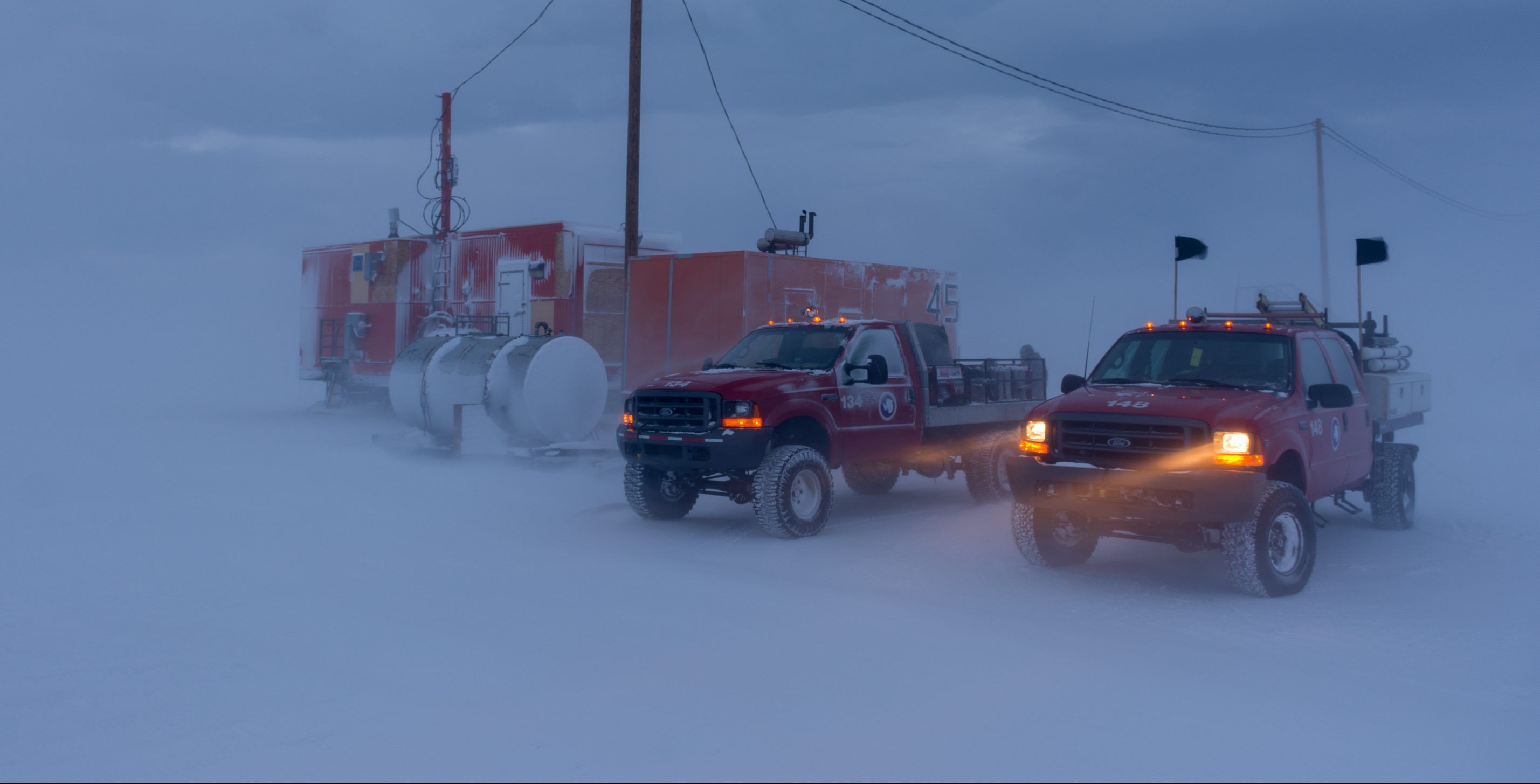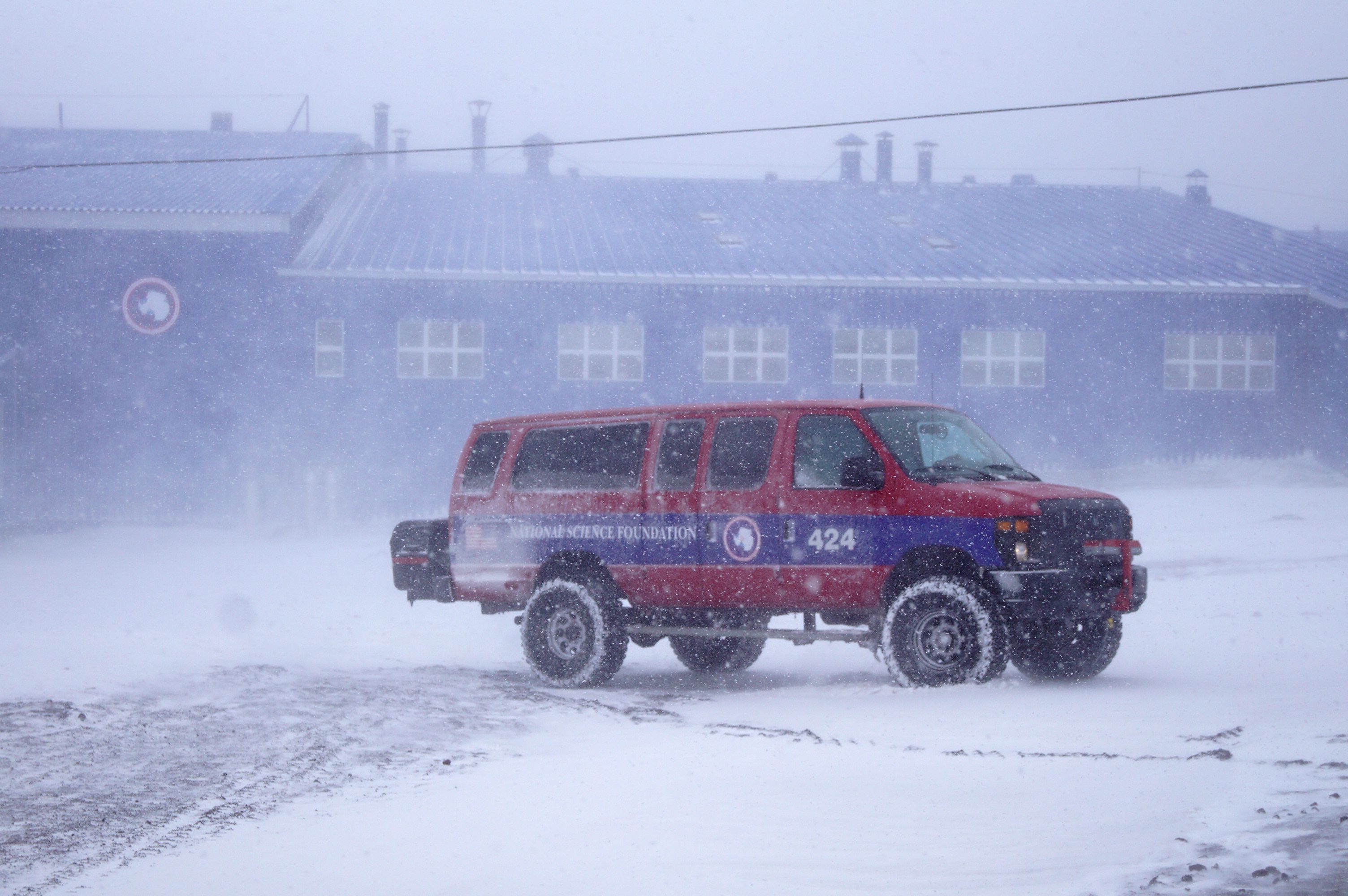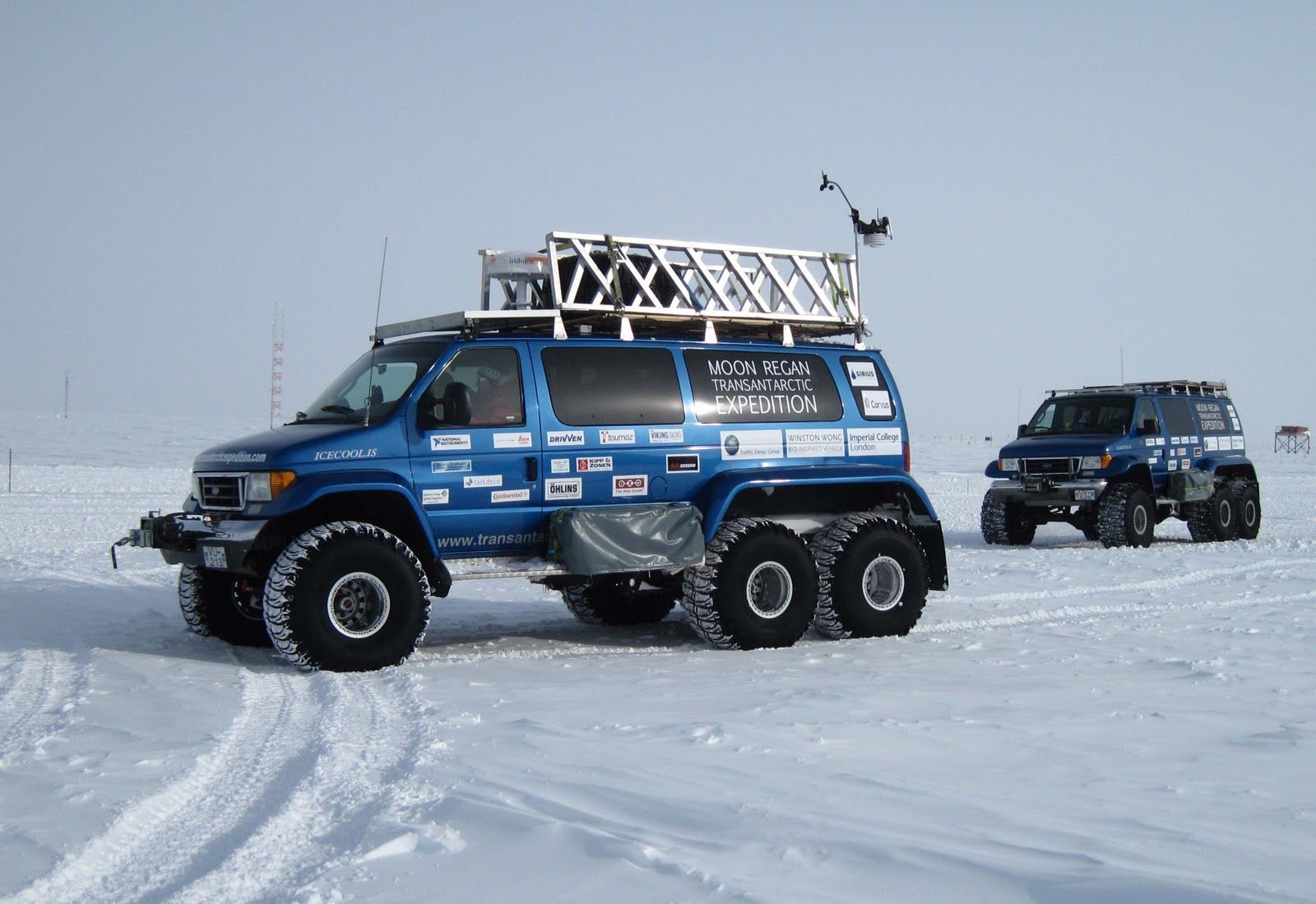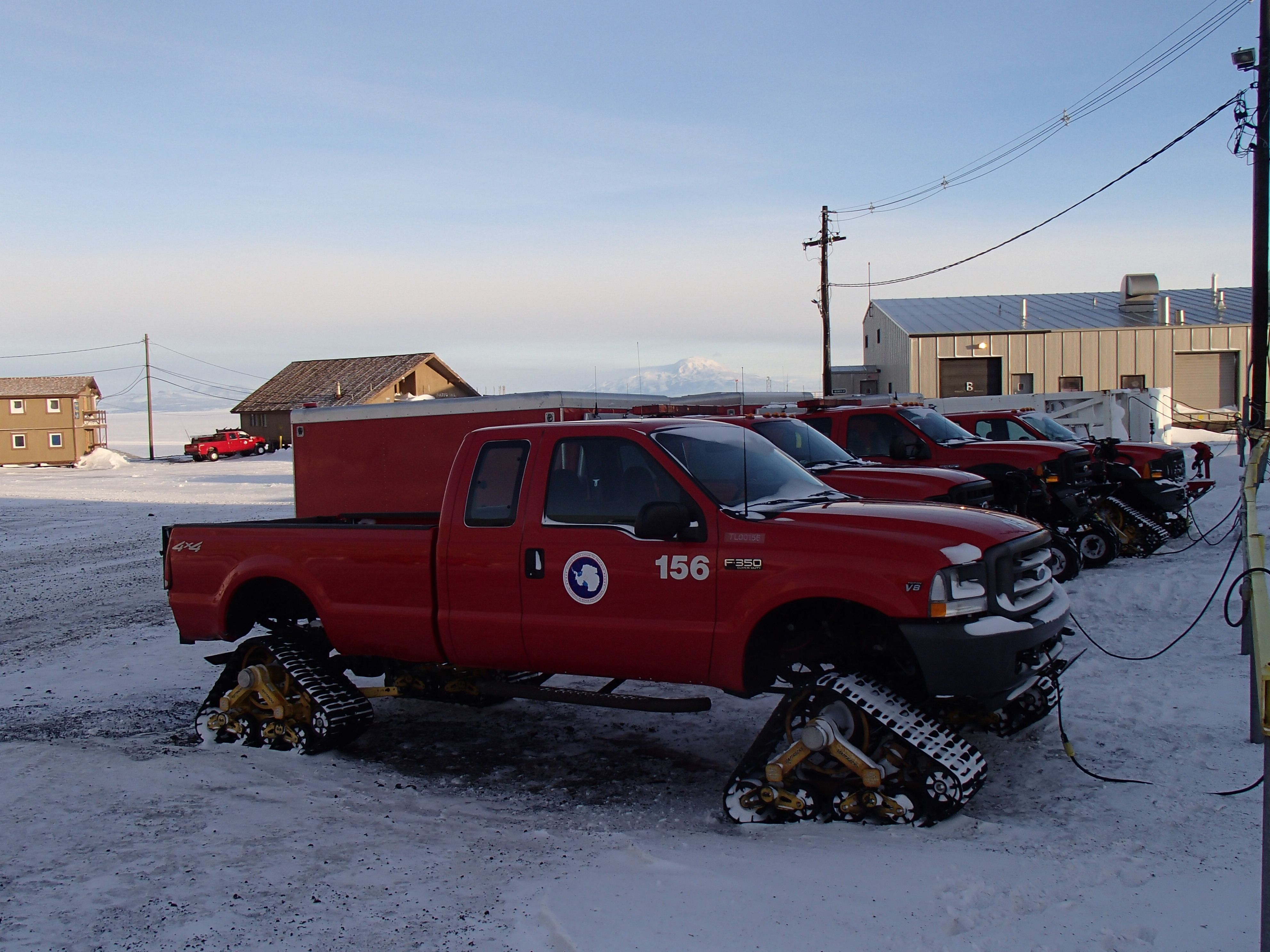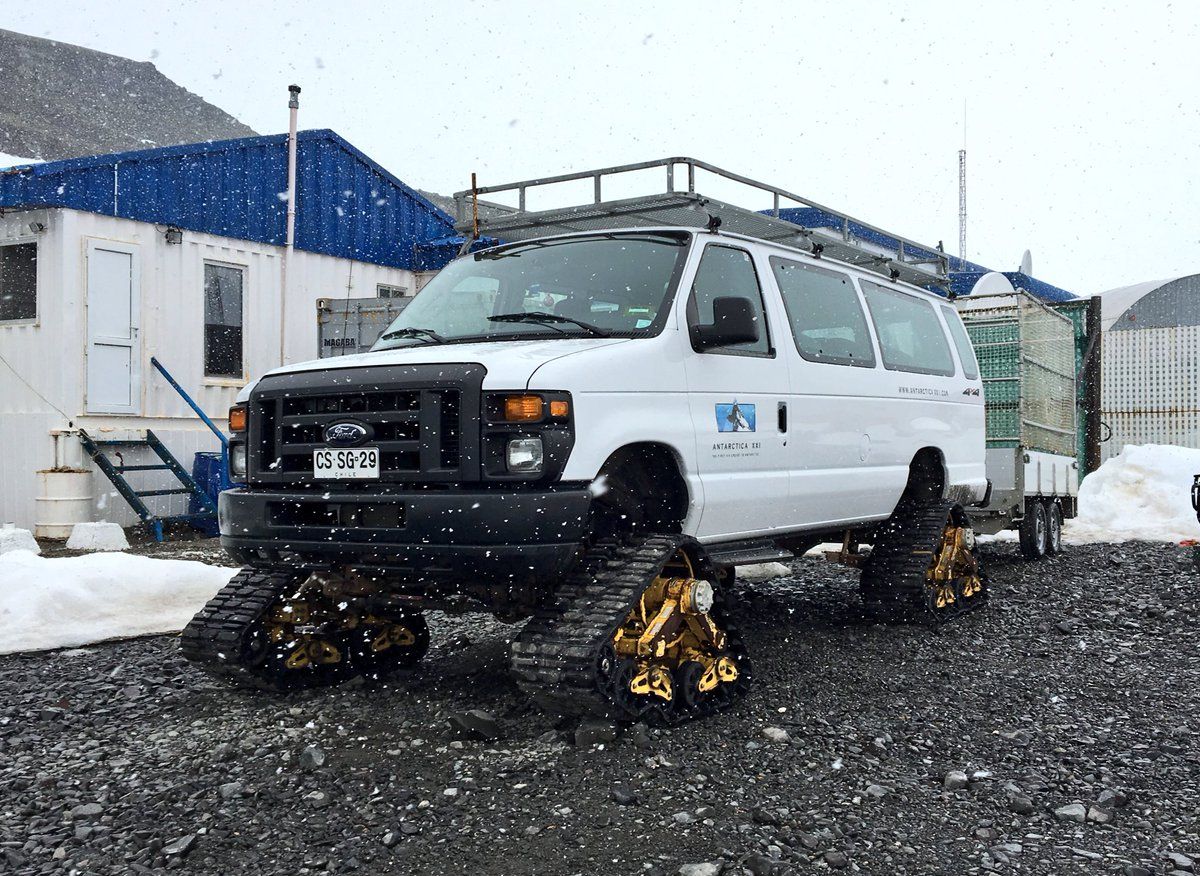Antarctica; the genuinely last frontier, at least on Earth.
The coldest, windiest, driest continent, and the only one without a permanent settled human population - except that of course it does have a permanent settled human population, just no permanently settled humans.
42 signatory countries to the Antarctic Treaty operate a total of approximately 75 year-round and summer season bases on The Ice, giving this 'uninhabited' land mass a constant citizenry of up to 5,000 people during the 'warm' season, with around 1,000 hardy souls wintering over.
The good news is that anywhere that has that many people (except maybe a US Navy aircraft carrier) needs motor vehicles, and that makes Antarctica the coldest, windiest, driest place on Earth that you can drive. Not surprisingly, this involves significant challenges not only for drivers, but also for the vehicles themselves, which have to be extensively prepared and winterized, in order to remain operable in conditions that are the most hostile of any environment on the planet.
The Cold And Lonely Road
The lowest ground station temperature ever recorded in the Antarctic was −89.2 °C (−128.6 °F) in 1983, which is kinda chilly. In fairness that was in the middle of winter, at a Russian base 11,500 feet up on the shady side of a mountain. Conversely, mean summertime temps nearer the coast, where most of the bases are, fluctuate anywhere between about -55°C and a positively balmy -10°C during heatwaves. Machinery doesn't much like being that cold, and more to the point neither does diesel, so vehicles are loaded with cunning modifications to keep them running. You don't want to be jump-starting the Sno-Cat when it's sixty below and blowing a hundred-knot southerly, and the fuel in the tank is a solid block of wax.
Very low pressure balloon tires, or rubberized band tracks, are the order of the day, and high ground clearance is a must, as is four, six, or eight-wheel drive - the more the merrier. Because it's so cold, Antarctica has very little actual precipitation, and many bases are built on bare ground, where rocks can be big, jagged, and unforgiving in the way that only rocks can be, as well as being freezing bloody cold. Officially the place is a desert. Off the rocks, the snow shifts constantly thanks to the wind, and there are uncountable crevasses to negotiate. Like the snow, these shift as well, and ground-penetrating radar has become a boon for latter-day Antarcticans who, unlike their forebears, no longer have to rely on someone walking ahead of the sledges, poking the snow with a long pole in order to avoid plummeting to a sudden, unexpected, and very chilly death - or worse.
There are no roads as such on the frozen continent, but there are flag-marked trails created by dozing snow and ice into its own never-ending substrate of cracks and fissures, and track-rolling back over them. These need to be maintained after every blizzard; eat your hearts out, Ice Road Truckers - this is where the going REALLY gets real.
Modify Or Die
It's just shy of a thousand miles from the Ross Sea bases of McMurdo and Scott, to the South Pole Station. An outside observer (or in fact anyone sane) might think that flying in and out would be the transportation of choice, and of course planes do make regular trips to the interior. But it's not just some crazy adventure-lust that leads glacier-brain motorheads to drive it instead; rather, the height of the terrain along much of the route, as well as Antarctica's truly savage weather, means that aircraft are often simply not able to take off from elevated landing strips - the Pole Station itself sits at 9,300 feet - with any kind of meaningful load (such as enough fuel to get home). Seriously, blizzards down at the bottom of the world can rage for two or three weeks before abating, and their frequency is such that the gaps in between can be fleeting.
Vehicles are fitted with heaters for everything - transmissions and diffs, radiators, hydraulic reservoirs, sumps, fuel tanks, and even batteries need to be protected from the brutal cold. Exhaust stacks come with snow flaps, and pre-heaters are essential for air intakes. On top of that, doors require additional stay bars for safety and protection from winds that quite literally can, and sometimes do, tip 20-foot shipping containers over.
Lubricants are specially formulated to cope with low temperatures, as is fuel. Petrol engines run on Mogas, a cold-tolerant, lead-free aviation gasoline, and diesels are fed a hearty diet of not-very-modified jet fuel.
Ford To The Fore
Vehicle choices vary from nation to nation and base to base, but outside of the heavy and more specialized equipment, not many marques have managed to stay the distance. Toyota are making inroads nowadays, and Hyundai also have a presence; but a more common sight around the traps are Ford E-series vans and F-250 and F-350 pickups. McMurdo alone has around 60 Super Duties in the motor pool, and they're also used by the Chilean, Argentinian, British, Australian, and New Zealand Antarctic programs, and others. (Canada doesn't officially go to The Ice. They have enough of the stuff at home. True story.)
Much of the equipment that keeps researchers mobile in Antarctica, and many of the drivers, come to that, have cut their respective teeth in the oil fields of northern Canada and Alaska, with no small degree of input from the mad six-wheel-driving Vikings of Iceland. But even these testing climes are but a teaser for the main event that is the challenge of driving in a place so harsh and unforgiving, that NASA and the European Space agency use it as a proving ground for the gear they plan to take to Mars.

